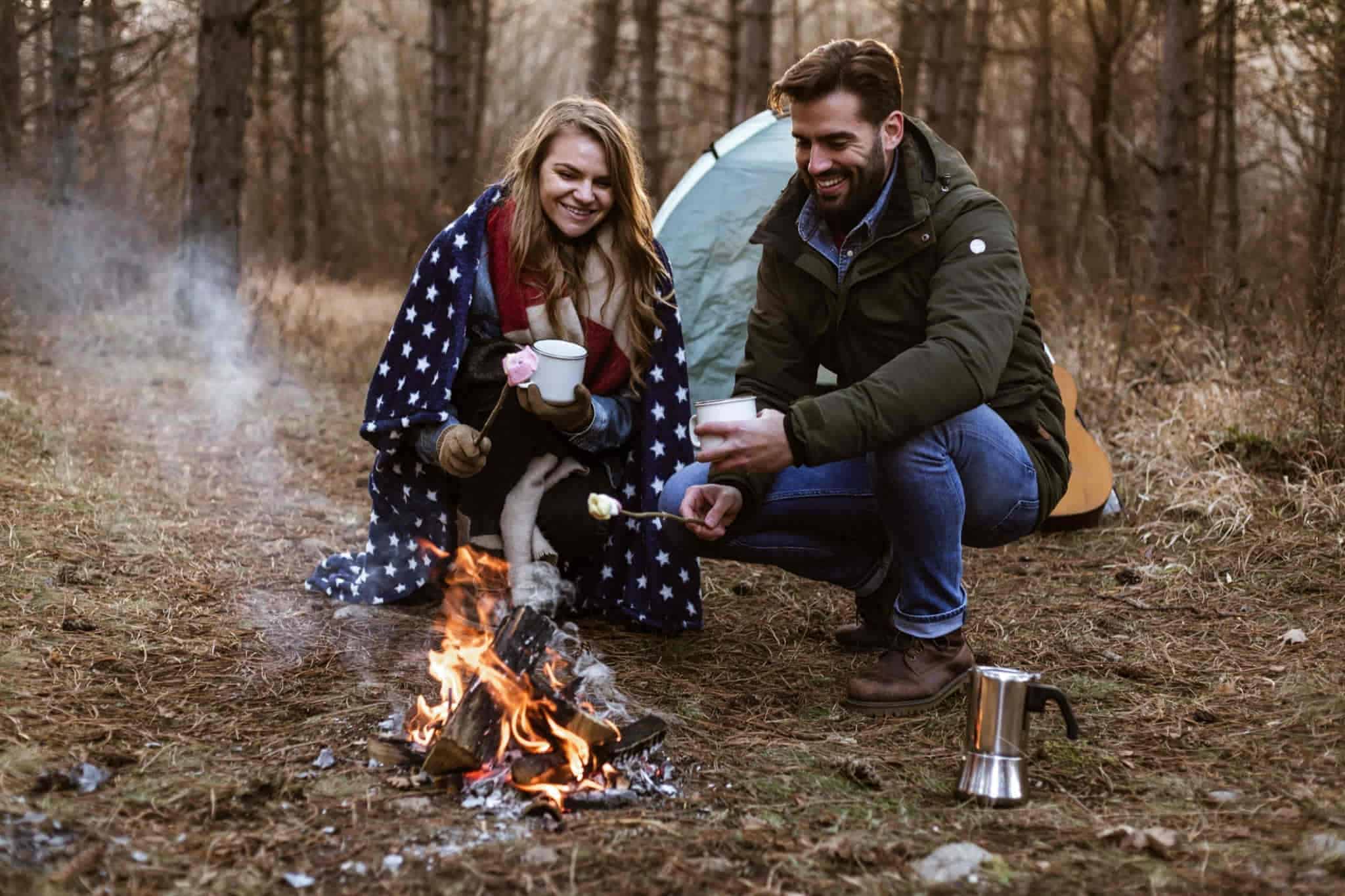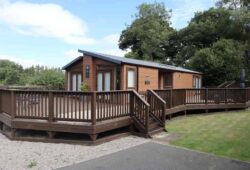If you plan to head out and camp soon, you might want to know what temperature is too cold for camping.
After all, the idea of camping in the summer may not be too appealing because of the crowd. As the weather is milder in the summer, you can expect most camp spots to be teeming with visitors. And worse, there are plenty of mosquitoes this time of the year, as well.
So, the idea of camping in winter is appealing for most people. With the camp spot all by yourself, it is definitely more serene. You will be able to enjoy the gorgeous outdoors and have some peace and quiet.
However, there is one caveat to camping in the cold weather. The temperature dips pretty fast, and the last thing you want is to shiver underneath your thick blanket.
Before you go and pick a camp spot during the cooler seasons of the year, be sure to know what the safest temperature is for camping. This way, you can make the most out of your trip each time!
Contents
Camping In The Cold – What’s An Ideal Temperature?
One thing we want to stress out – camping in the cold is tough. It is not something for the faint of heart, that we guarantee. Although one’s cold tolerance is different from others, there is such a thing as dangerously cold. This is the last thing you want to experience when camping.
In the late fall, for instance, the temperature starts to dip significantly. Thus, you will need to wear extra layers over your winter fleece.
When you camp in the cold weather, you need to stay warm and cozy.
Cold weather camping would mean temperatures between 30 and 40 degrees fahrenheit, which is already too frigid for inexperienced ones. Thus, when you camp at 32 degrees fahrenheit, you will have to brace yourself for the extra chilly camping experience.
Basically, you have to factor in elevation. The higher the altitude, the lower the temperature. So, in addition to being in a cold camp spot, it gets extra colder when you are at a high location.
This is another thing to think about when planning on what to take with you during your trip. Or, you can also determine if it is even safe to still camp considering the extreme cold.
How Cold Camping Can Get

It is quite complex to figure out how cold you will get on your trip.
As we have mentioned earlier, you need to consider the elevation of your camp spot, the weather forecast, and the temperatures at night and day. Even after having all of these details figured out, you still have to prepare for probably major dips in temperature.
The greater the altitude, the less air there will be. What this means is that the surrounding air is unable to trap much heat. Hence, the mountain top is way colder than what it’s like at the base.
For instance, if you camp at Grizzly Peak in Yosemite in November, you can see a 20 degrees Fahrenheit difference in the temperature between lower and higher elevations.
Factors To Consider When Determining Temperature Forecasts
Additionally, you want to determine the weather forecast at your campground. The only thing to keep in mind is that it may not even be accurate. After all, the weather station is unlikely to be in the exact elevation as the campground.
Let’s say the weather station is only at 1200 feet elevation. However, the campground you are looking at is more than 5000 feet high. So, you cannot expect the forecast to be exactly the same once you reach your destination.
With this in mind, you may want to find a weather station that is closely situated to your campground. Or at least make sure they are on the same elevation. This way, you can have a clearer idea of the temperature you can expect.
In case you are unable to find one that’s in the same elevation, then you can make a rough estimate. After getting the forecast from the weather station in close proximity to your destination, calculate the difference between the campground’s and the weather station’s elevation.
If there is no rainfall or snow, the decrease in temperature should be about 5.4 degrees Fahrenheit for every thousand feet in elevation.
However, when it is raining, snowing, or cloudy, the decrease is only about 3.3 degrees Fahrenheit.
Nighttime and Daytime Temperatures Matter
In the case of lower elevations, there should not be much difference between low and high temperatures.
However, it is not the same with higher elevations. For instance, daytime temperature can be very high while it may be freezing at night.
In the Rocky mountains, for instance, camping at these areas in the spring or fall can be under 10 degrees Fahrenheit during the night. This can be very much unbearable for some people. But during the day, it may still be tolerable at 30 to 60 degrees.
Furthermore, camping in the cooler months in the Colorado Springs, which is at 6000 feet in elevation, can go as low as 31 degrees Fahrenheit. It is not only going to be a miserable experience for many people. This is a dangerous thing to do, especially if you have come unprepared for this drastic dip in temperature.
Read More: Are Double Sleeping Bags A Good Idea? Know Before You Buy!
Camping At Different Temperatures
If you are camping in the low 40s, nighttime can be quite pleasant. While it is definitely cold, it is still not dangerously freezing. With mediocre clothes are warm gear, you will be able to rough it in.
However, camping in the 30s or under is tough. In some cases, there may even be rain, which can add to the discomfort aside from getting really cold. So, you will need additional warm clothes and waterproof sleeping gear.
But if you decide to camp in the 20s, expect things to get even more difficult. It is uncomfortable, unbearable, and very dangerous. If you lack proper gear, you may end up suffering from a frostbite or even hypothermia, which will jeopardize your health and your life.
So, unless you want to put your life at risk, you may either start out with warmer temperatures before hitting the 20s. Or, you can forget about it and opt for a more pleasant camping experience.
Be informed, come prepared, and stay safe during your camping trip!




